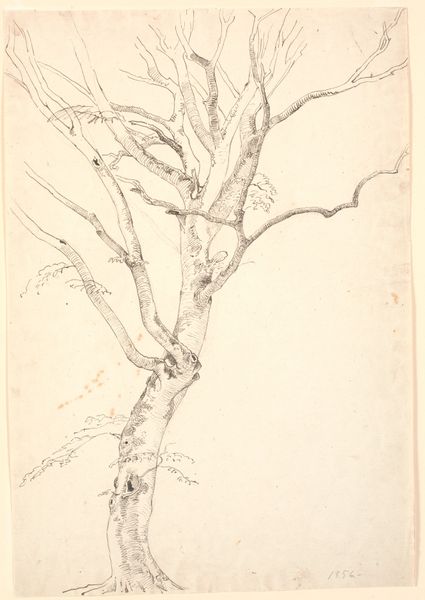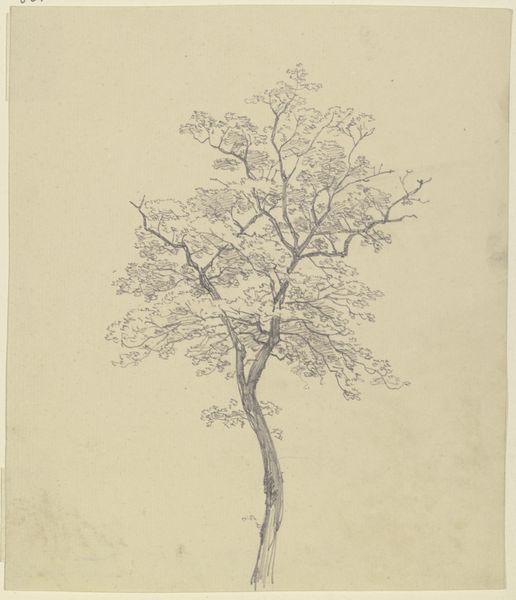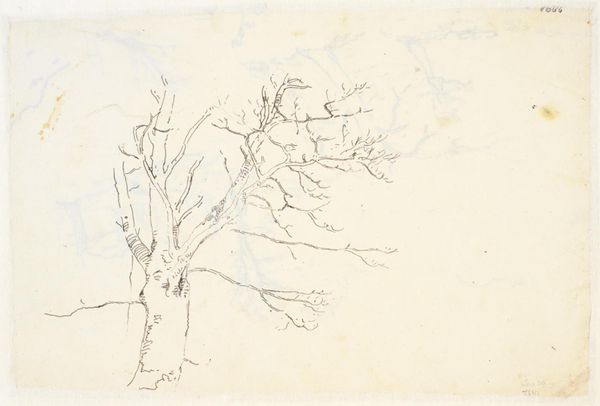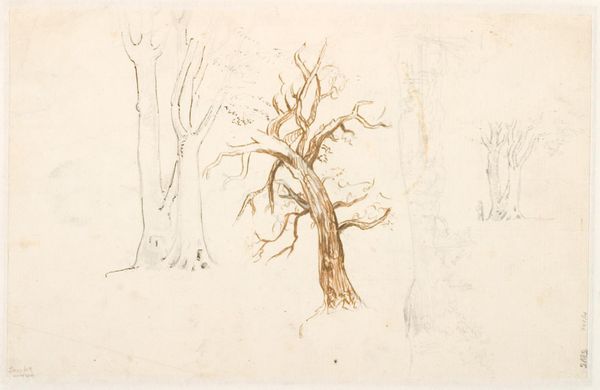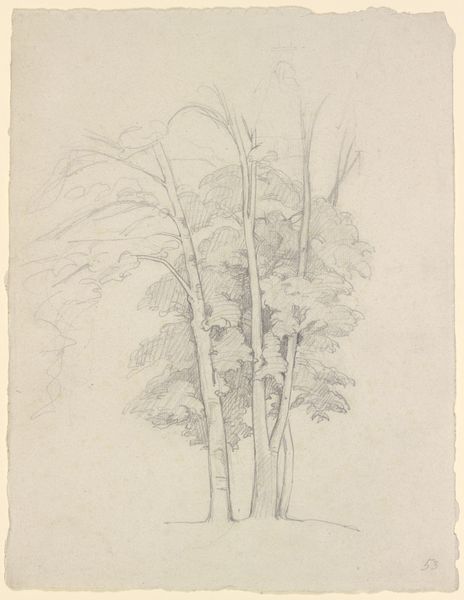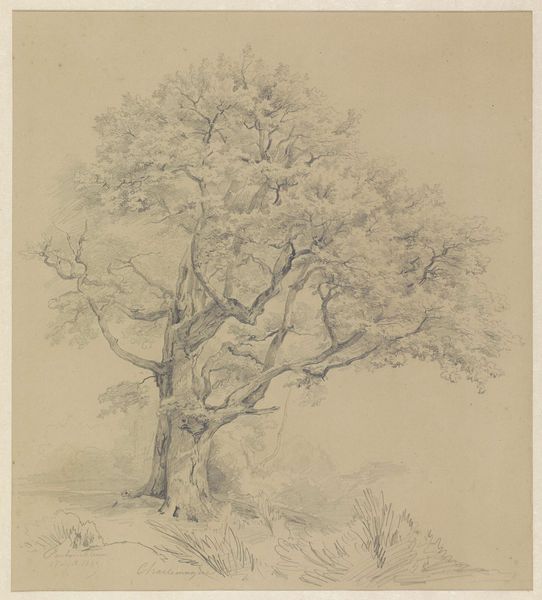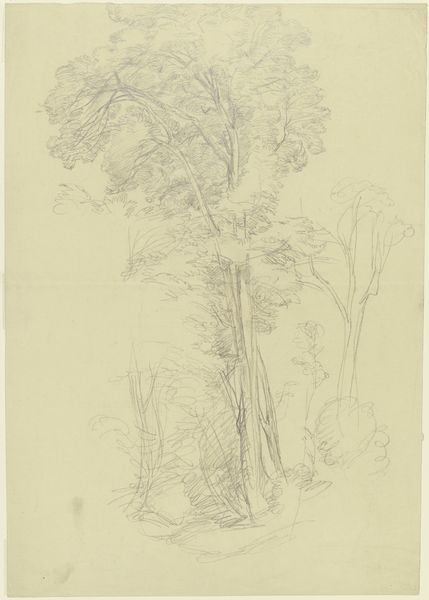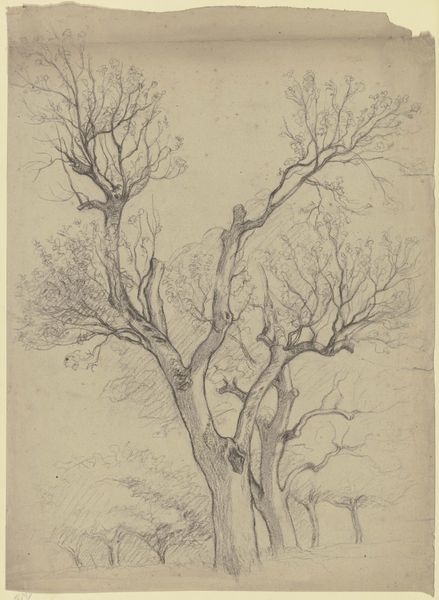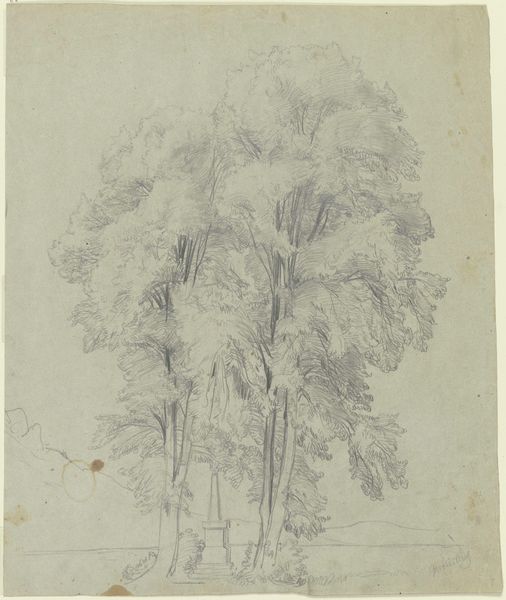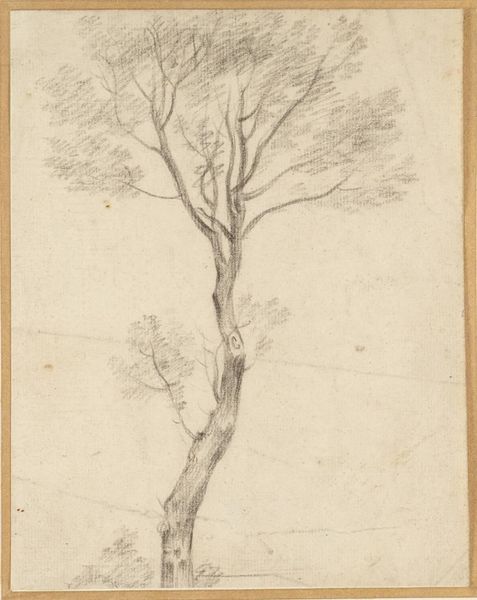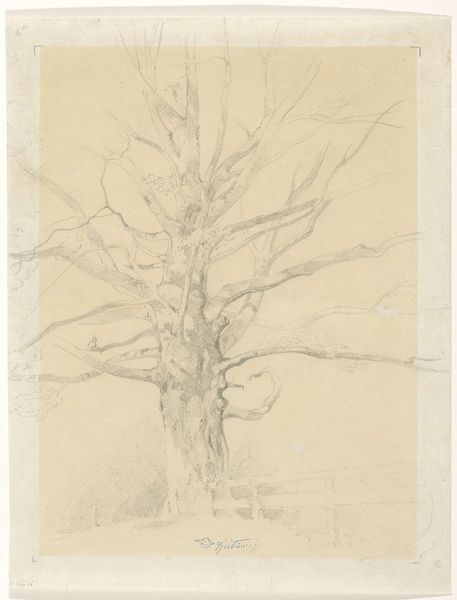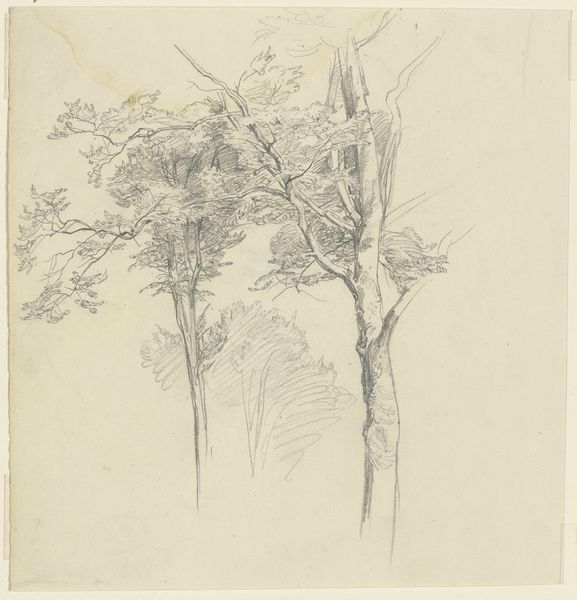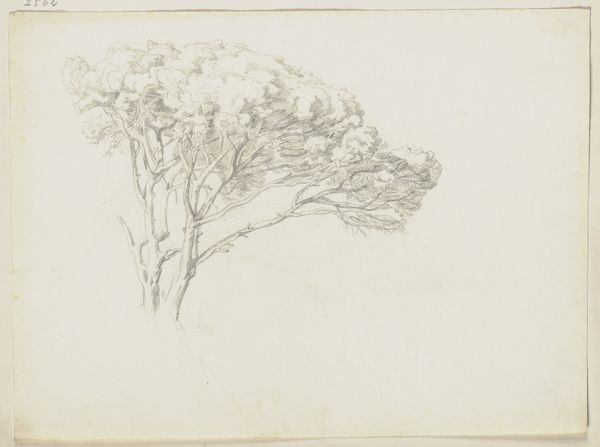
Dimensions: sheet: 9 15/16 x 6 7/8 in. (25.2 x 17.5 cm)
Copyright: Public Domain
Editor: Here we have Myles Birket Foster's "Study of a Dead Tree," created sometime between 1840 and 1899, a pencil drawing. It’s stark, almost skeletal, really emphasizing the texture of the bark and the jaggedness of the broken branches. How would you interpret this work? Curator: The arresting element is precisely what you observed – that jagged skeletal structure. It calls attention to the composition’s reliance on line and form. Note the stark contrast between the rough, heavily rendered trunk and the delicately drawn branches, creating a tension within the seemingly simple subject. How does the negative space around the tree contribute, in your view? Editor: It makes the tree feel isolated. Like it's the only thing there, all alone in the world. Curator: Precisely. This isolation directs our focus solely on the tree's form. The artist avoids extraneous details, thereby amplifying the symbolic weight of the bare tree itself. Observe how the play of light and shadow accentuates the contours. Do you notice how Foster utilizes the pencil to build texture? Editor: Yes, the trunk is almost sculptural, there's such depth to it using just pencil. It makes me think about the life that’s no longer there, almost like a symbol of mortality. Curator: Mortality is but one interpretation, and perfectly valid, but observe again, and closely, that is merely an illustration in skilled hands of the formal capacity inherent to Romanticism. The stark form before us stands as testament. An exercise of material, nothing more. A study in tonal variations. Editor: I see what you mean. It is much more than the illustration of mortality once we examine it as merely the artist and his careful considerations for the way line, value, and form are intertwined. Curator: Indeed. I think that we can both leave with a sharpened awareness of line.
Comments
No comments
Be the first to comment and join the conversation on the ultimate creative platform.
